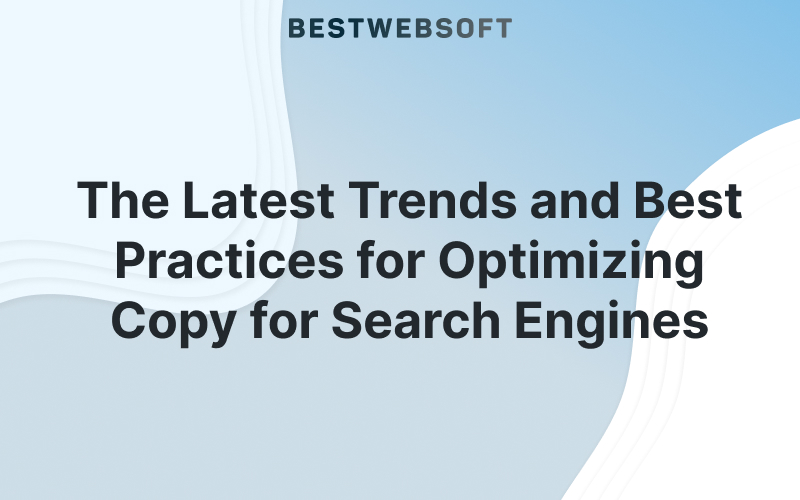
Trends come and go, and best practices live forever. However, in some eras, they work harmoniously together. Such is the case for optimizing copy for search engines.
It takes a bit of both. The best balance is to capitalize on the latest trends while keeping best practices at the core of everything you produce. Here is a guide to help you blend the two and optimize every future project.
Prewriting Optimizations
Before you ever put a cursor to paper, these are the SEO tactics and practices that help you build a strong content strategy.
Topical Wins
Your focus should always be on delivering topics your market cares about. This is where trends come into play in your content strategy. What is relevant now? How can you pivot current events, headlines, new products and services, and pop culture in general into fresh content?
There will always be the primary three to five topics that relate to your brand and your position as a thought leader in the space. However, it’s up to you to develop new and innovative takes on the same ideas. Using trending themes is an easy win to get the most traction out of your content.
Keyword Research
Your keyword research often determines how you frame your content based on your topical wins. Your target market uses these terms to find resources, products, and services that match their needs.
Keywords inform much of your online marketing strategy, but it’s critical to SEO optimization and content marketing. Think of the keyword as the mannequin on which the rest of the piece is written, and the topic is the clothes that it wears. The topic of each individual piece can change and look different depending on the season or the trend, but the framework, the mannequin, is the same.
Competitor Research
It’s not enough to know who your competitors are. You have to know what they’re doing, how they’re doing it, when, and for whom. The primary driver behind competitive research is to find out why your customers are choosing them over you.
Invest the time and energy into studying their landing pages, featured snippets, blog posts, article format, blog post length, video content, etc.
No one is suggesting that you take this information and replicate it. However, there’s wisdom in knowing where your competitors win, where they fail, and where you can fill the opportunity gap between the two.
Writing Optimizations
Now that you know what you’re writing and what format it will take, the next step is crafting a high-quality resource that adds value – both to prove your credibility to search engines and to serve your target market.
Premium Quality Copywriting
You could have the most important message to communicate in your industry, but if it’s buried in a shady, poorly written, keyword-stuffed content piece, no one will read or share it. It’s time to either brush up on those copywriting skills or work with top-quality copywriting services.
Trending Tools
There are a number of tools to make the content creation and development process easy, and new ones are added every day. While the current trend is to leverage the done-for-you AI writing assistants, there are a number of reasons I would caution against it.
- AI writing assistants cannot verify or fact-check what they generate.
- AI writing assistants cannot “understand” context.
- AI writing assistants only curate and reframe content that already exists.
Frankly, it’s just not worth the risk of producing poorly crafted and unverified content.
Here are a number of helpful tools we use within the parameters of my SEO content writing services to produce premium content:
- Ahrefs: This SEO platform is a giant in the space and offers free and paid features for keyword research and SEO optimization.
- People Also Ask: Google’s own related topics list, right from the search results, shows you what else you could incorporate into your content strategy.
- Answer The Public: Enter a keyword or phrase, and it will populate a comprehensive list of questions that are searched around that topic.
- Clearscope: This tool reveals opportunities for natural language keywords, pulls in relevant official sources, and helps you compare competitor results.
- Word Hippo: A creative tool to help you use more varied language in your writing by offering synonyms, antonyms, rhyming words, and more.
- Citation Machine: If you hate formatting citations as much as I do, you’ll love this DFY tool that cites virtually anything with the correct formatting.
Formatting
The content is for the reader, but the formatting and technical setup are for the search engine crawler bots. Always use your keywords in H1 and H2 tags and organize the content in a logical flow.
Use the real estate directly following an H1 or H2 tag to answer whatever question is being asked or directly address the section topic using your keyword. This offers the best chance of securing the featured snippet.
With the massive popularity of video content, this is an easy way to leverage this trend in all of your copy. Include a short or long-form video in articles or web copy, and if possible, include the script for inclusive access and an additional opportunity to capture crawler bot attention.
Deployment Optimizations
Now that you’ve carefully crafted your SEO-optimized content, it’s time to ensure that it’s not lost in translation once you hit publish.
Linking
Internal and external linking as long as it’s been a well-established best practice for search engine optimization. External links point readers back to your content from other credible sources, either from guest posting, social media, digital PR campaigns, or industry collaborations.
Internal linking offers readers other opportunities to remain on your website and learn more from in-house resources. Together, these linking strategies tell search engines that your content is credible and highly relevant to searchers.
Technical Set Up
Always optimize the technical elements of your web copy or article by using the keyword in the URL, meta title and description, image file names, and ALT tags. These elements are valuable digital real estate that you can leverage to communicate with search engine bots and expand the reach of your content.
Leverage Trends When You Can, But Always Stick To Best Practices
Optimizing copy for search engines is a long-term process that begins with your next piece and pays off for the lifetime of your brand. Leveraging trends can inject a quick boost and elevate your other content but should never be in place of best practices.
About the Author

Liz Slyman
Over the past decade, Liz has worked as a copywriter and digital marketing executive for a multitude of companies from startups to and mid-sized businesses to working as the VP of marketing for award-winning, platinum-selling artists. Leveraging an understanding of the nuance of language in marketing, Liz founded Amplihigher, a content marketing and copywriting agency, designed to connect consumers to companies in a way that results in next-level brand expansion.

